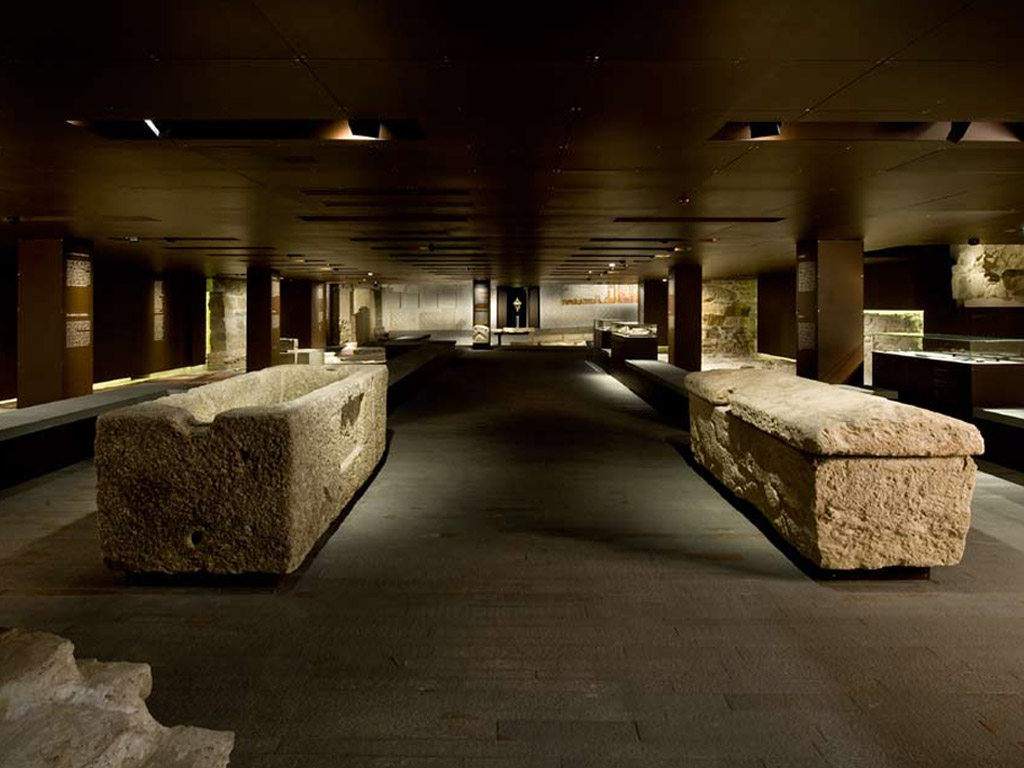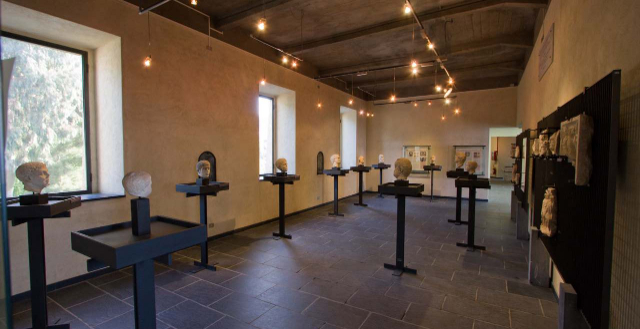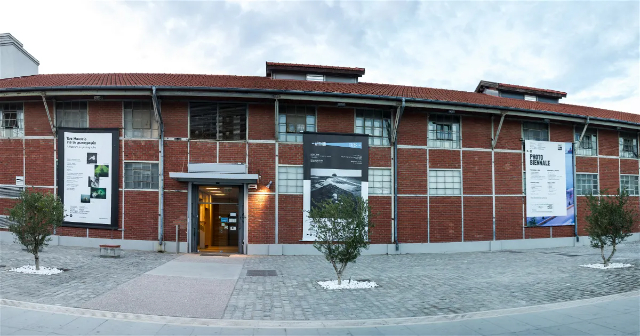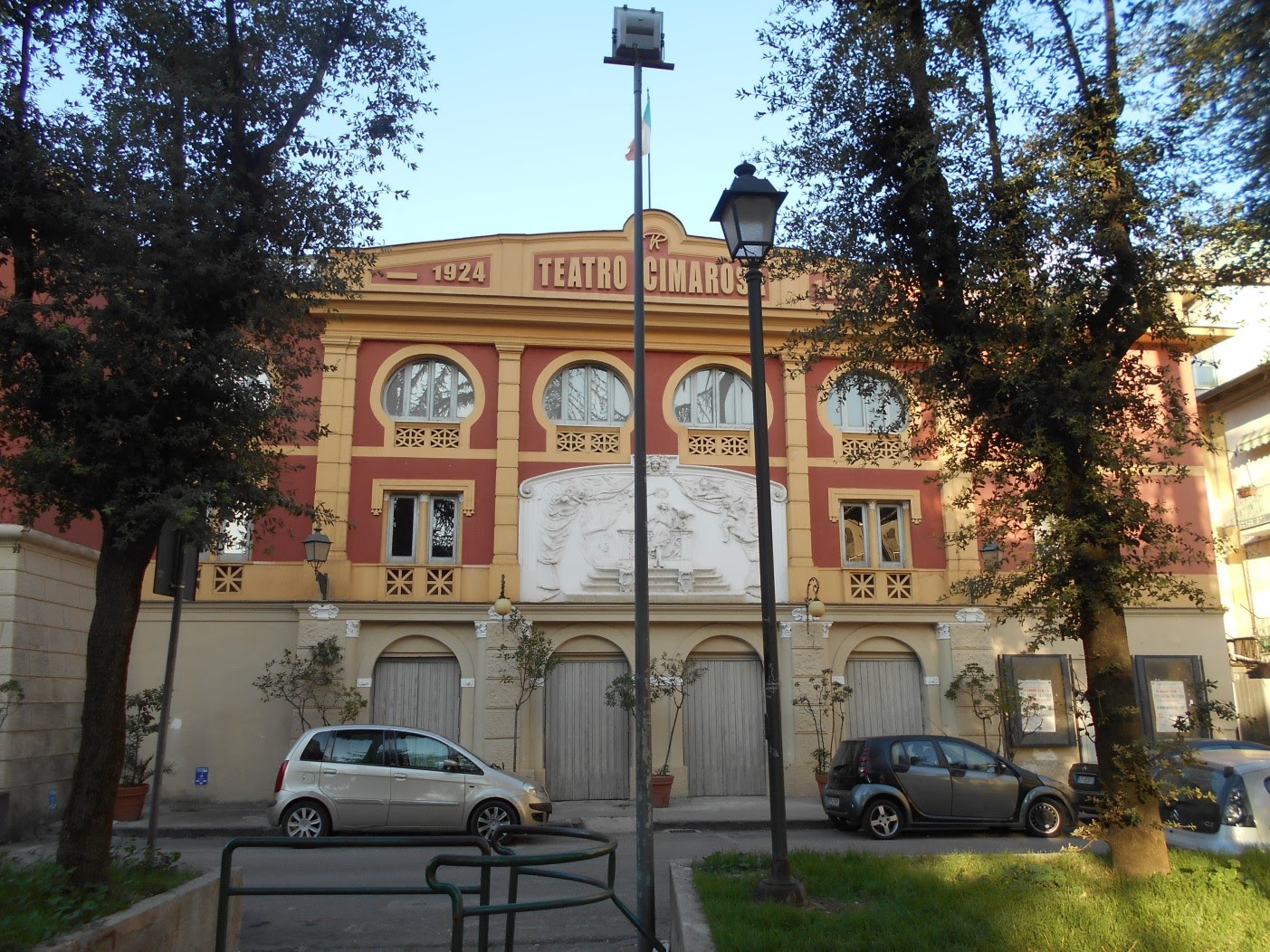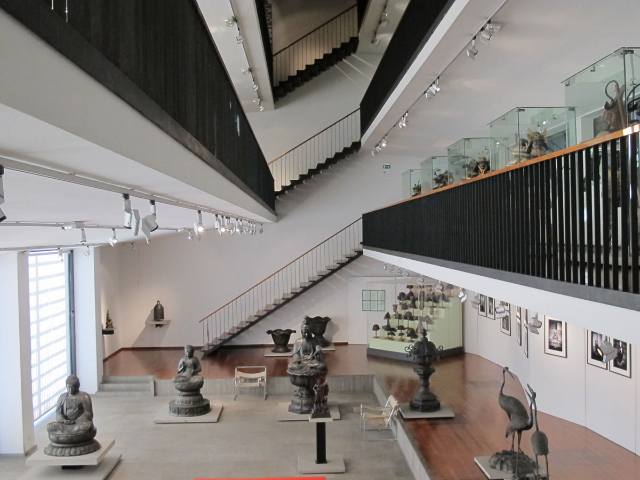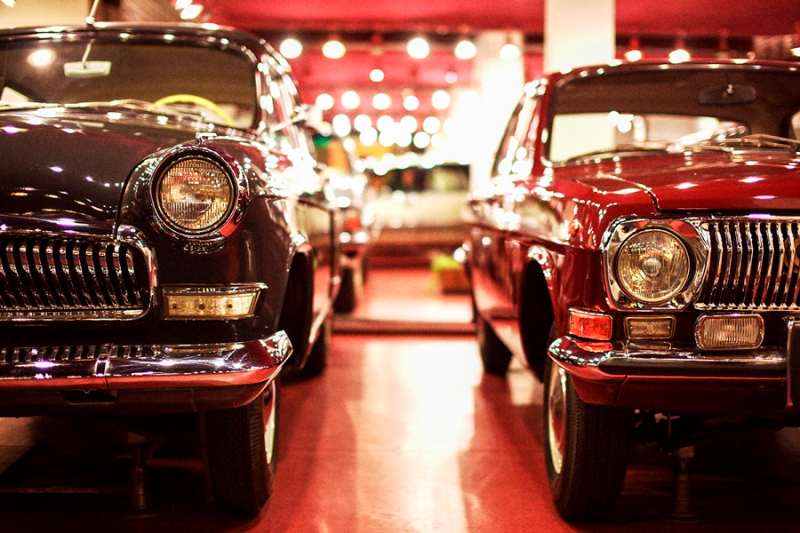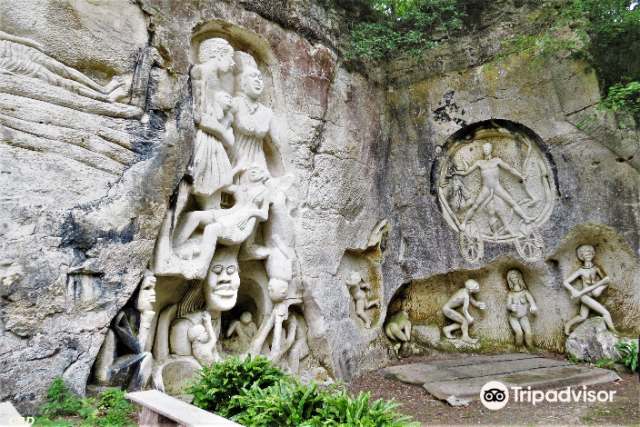With this Museum the Diocese of Bergamo wants to make known the history of its church, illustrate the complex and fascinating construction events that have involved this place and, through the exhibition of precious objects of art and liturgy, approach the visitor to the atmosphere of sacredness and beauty that characterized the life of the ancient Cathedral of San Vincenzo.
Thanks to a complex campaign of excavations (2004 – 2012) in the subsoil of the Duomo, traces of a Roman site, the early Christian Cathedral of San Vincenzo and the subsequent Romanesque Cathedral, wrapped in the Renaissance reconstruction of the architect Filarete, have emerged.
The map of the excavation finds highlights the evolutionary phases of this place, already inhabited since the tenth century BC.
From the 1st century B.C. to the 4th century A.D. the area was occupied by a Roman quarter, adjacent to the forum, crossed by a commercial road on which there were shops, artisan workshops and residential domus with rich architectural and decorative features.
In the 5th century a Cathedral dedicated to St. Vincent was built.
The size of the basilica was impressive: it measured no less than 45 metres long by 24 metres wide and was the largest sacred building in the city.
The line of the perimeter walls of this structure was maintained in the subsequent building phases and corresponds (excluding the eastern side of the presbytery) to the perimeter of the present church.
The Cathedral Museum tells the articulated story of this evolution, between archaeological finds and artistic artifacts.
At the heart of the route is the Treasure of the Duomo, a collection of the most precious objects that have survived and been preserved over the centuries.
